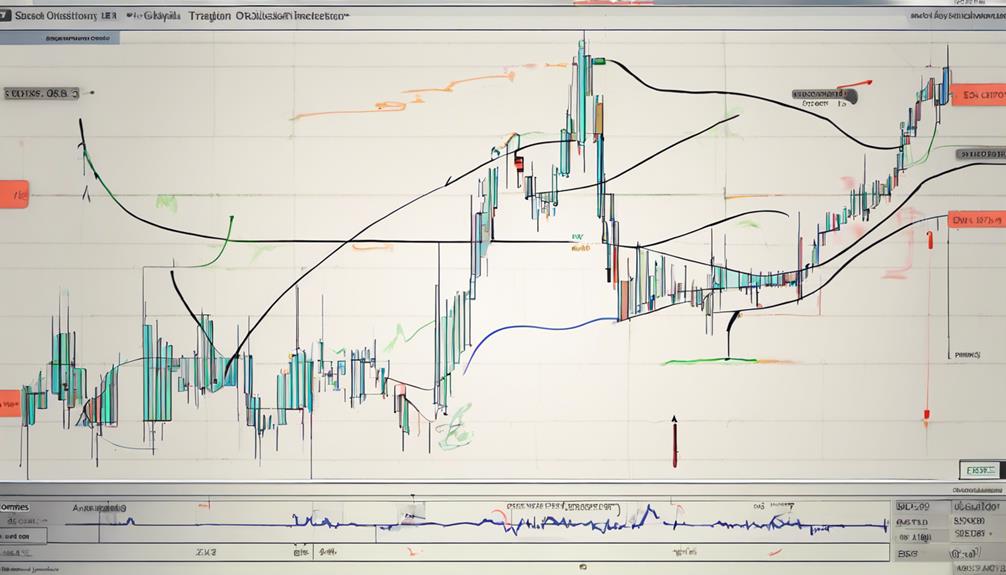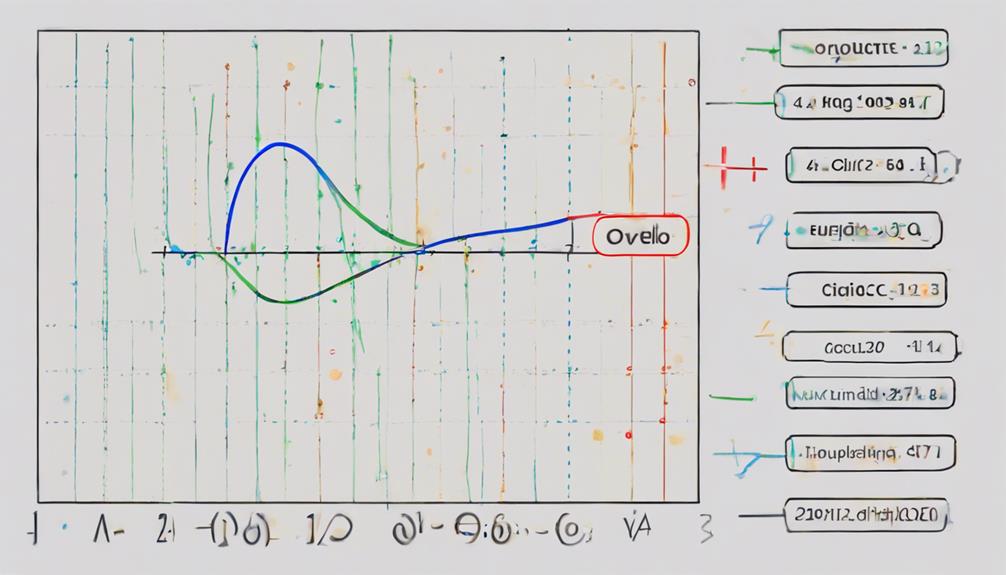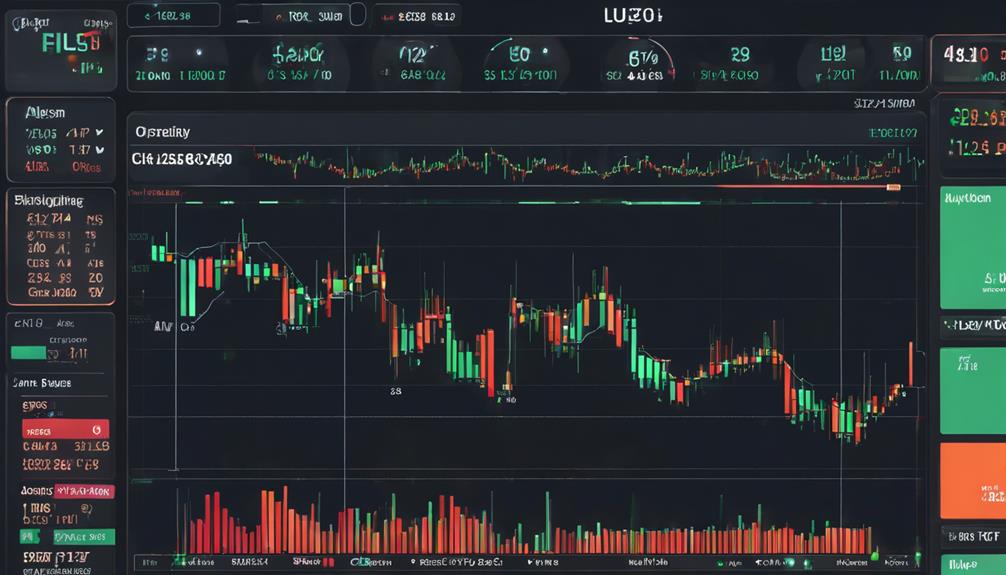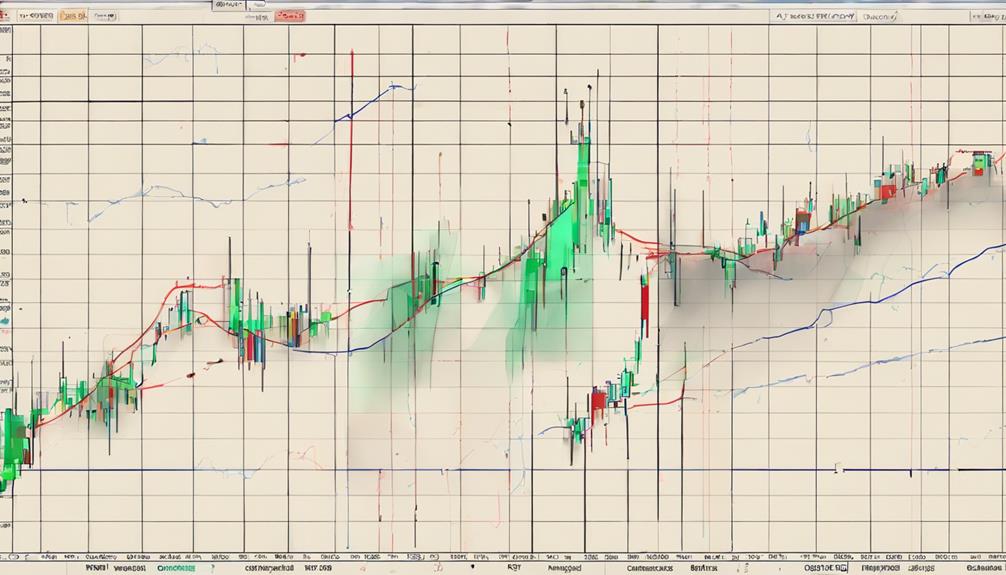The Ultimate Oscillator stands out in trading due to its unique approach of amalgamating multiple timeframes to form a comprehensive momentum indicator. Its ability to blend long-term perspectives with short-term fluctuations provides traders with a more stable and accurate representation of market trends.
Moreover, the oscillator's emphasis on divergences and fewer yet reliable signals adds a layer of sophistication to trading strategies. Understanding why traders opt for the Ultimate Oscillator can shed light on how this tool assists in making informed and strategic trading decisions.
Understanding the Ultimate Oscillator
The Ultimate Oscillator, devised by Larry Williams in 1976, serves as a comprehensive tool for evaluating price momentum across various timeframes through the amalgamation of short-term, medium-term, and long-term data points. By utilizing 7, 14, and 28-period timeframes, this oscillator effectively captures the nuances of price movements while reducing volatility through weighted averaging. This approach corrects early signals of overbought conditions and bearish divergence, enhancing the indicator's reliability.
The Ultimate Oscillator calculates buying and selling pressure by analyzing the price range movements within these designated timeframes. This enables traders to gauge the strength behind price actions and make informed decisions based on the momentum shifts. With key levels at 30 and 70, the oscillator moves within a range of 0 to 100, generating signals when price-indicator divergences occur. Understanding the intricacies of how the Ultimate Oscillator interprets price momentum across different timeframes is crucial for traders aiming to capitalize on market trends efficiently.
Working Mechanism of Ultimate Oscillator

Incorporating a sophisticated algorithm, the Working Mechanism of the Ultimate Oscillator delves into the intricate analysis of price momentum across three different timeframes. By considering periods of 7, 14, and 28, this technical tool calculates the average price momentum, emphasizing both high and low points within these intervals.
The Ultimate Oscillator's method of evaluating buying pressure and true range values across these multiple timeframes enables traders to gain a comprehensive understanding of market dynamics. The weighted average utilized by the Ultimate Oscillator serves to smooth out price fluctuations, aiding in the identification of potential trend reversals.
Through the analysis of divergences and overbought/oversold conditions, this tool assists traders in making well-informed decisions. By filtering out false signals, the Ultimate Oscillator offers a clearer depiction of market momentum, enhancing the precision of trading strategies.
Its ability to synthesize data from various timeframes provides traders with a holistic view, making it a valuable asset in the realm of technical analysis.
Calculating the Ultimate Oscillator

Utilizing weighted sums of Buying Pressure (BP) from varying timeframes, the calculation of the Ultimate Oscillator integrates True Range (TR) and Average True Range (ATR) to generate oscillator values. This momentum oscillator, developed by Larry Williams, uses a unique approach by considering three different periods (7, 14, and 28) to calculate the Ultimate Oscillator. Weightings of 4:2:1 are applied to the Buying Pressure values from these timeframes, emphasizing recent price action more heavily.
By incorporating True Range into its formula, the Ultimate Oscillator captures the volatility of the asset, making it more adaptive to market conditions. This indicator generates values between 0 and 100, with overbought conditions typically identified above 70 and oversold conditions below 30.
Traders look for signals based on divergence starting from oversold or overbought levels, as well as instances where price makes a higher high or lower low while the Ultimate Oscillator behaves differently, indicating a potential reversal in the market.
Benefits of Using Ultimate Oscillator

Enhancing trading strategies with the Ultimate Oscillator involves leveraging its unique ability to combine multiple timeframes for a comprehensive momentum analysis. By considering short, medium, and long-term trends, this technical analysis tool provides a reliable momentum indication.
The Ultimate Oscillator's incorporation of 7, 14, and 28-period timeframes helps traders reduce false signals and better identify overbought and oversold conditions, offering valuable insights into potential trend reversals. Traders can utilize this oscillator to generate buy and sell signals by spotting divergences with price action, enhancing decision-making in various markets such as stocks, forex, and commodities.
Its versatility makes it a widely applicable tool in technical analysis, aiding traders in making informed decisions based on a holistic view of momentum dynamics. The Ultimate Oscillator's ability to offer a comprehensive view of momentum across different timeframes makes it a valuable asset for traders seeking to refine their strategies and improve their trading outcomes.
Application of Ultimate Oscillator in Trading

The application of the Ultimate Oscillator in trading provides traders with a comprehensive analysis of market momentum by effectively integrating short, medium, and long-term signals. When utilizing this tool, traders must pay attention to three key elements: the formation of a bearish divergence, the formation of a bullish divergence, and the rise of the Ultimate Oscillator. These indicators help measure the price momentum of an asset across multiple timeframes, offering valuable insights for trading and investing decisions.
Can the Ultimate Oscillator be Used for Trading in the Forex Market as Well?
The ultimate oscillator in forex is a versatile tool that can be used for trading in the forex market. Traders can use it to identify potential trend reversals and overbought/oversold conditions. By incorporating the ultimate oscillator into their trading strategy, forex traders can make more informed decisions and improve their overall trading performance.
Frequently Asked Questions
Which Oscillator Is Best for Trading?
The best oscillator for trading depends on individual preferences and trading strategies. Factors such as market conditions, risk tolerance, and timeframe play a crucial role in selecting the most suitable oscillator to analyze price movements effectively.
What Is the Purpose of Oscillators in Trading?
Oscillators in trading serve to analyze market dynamics by measuring price momentum and identifying potential reversals or continuations. They provide valuable insights into market sentiment and help traders make informed decisions based on price movements.
What Is the Difference Between MACD and Ultimate Oscillator?
The Ultimate Oscillator differs from MACD by incorporating buying pressure across multiple timeframes to identify potential reversals. MACD relies on exponential moving averages and crossover signals to gauge trend direction, while the Ultimate Oscillator focuses on overbought/oversold conditions and divergences.
What Is the Difference Between RSI and Ultimate Oscillator?
The RSI and Ultimate Oscillator diverge in their approach to momentum analysis. While the RSI focuses on a single timeframe for overbought/oversold signals, the Ultimate Oscillator's weighted average across multiple periods aims for more accurate trend indications.
Conclusion
In conclusion, the Ultimate Oscillator offers a sophisticated approach to trading by combining multiple timeframes to provide more reliable momentum signals. Its weighted averages smooth out price fluctuations, reducing volatility and generating fewer but more accurate trade signals.
By utilizing divergences and integrating with other tools, the Ultimate Oscillator enhances trading decisions. Its effectiveness in predicting trend reversals makes it a valuable asset for traders seeking to make informed and strategic investment choices.
